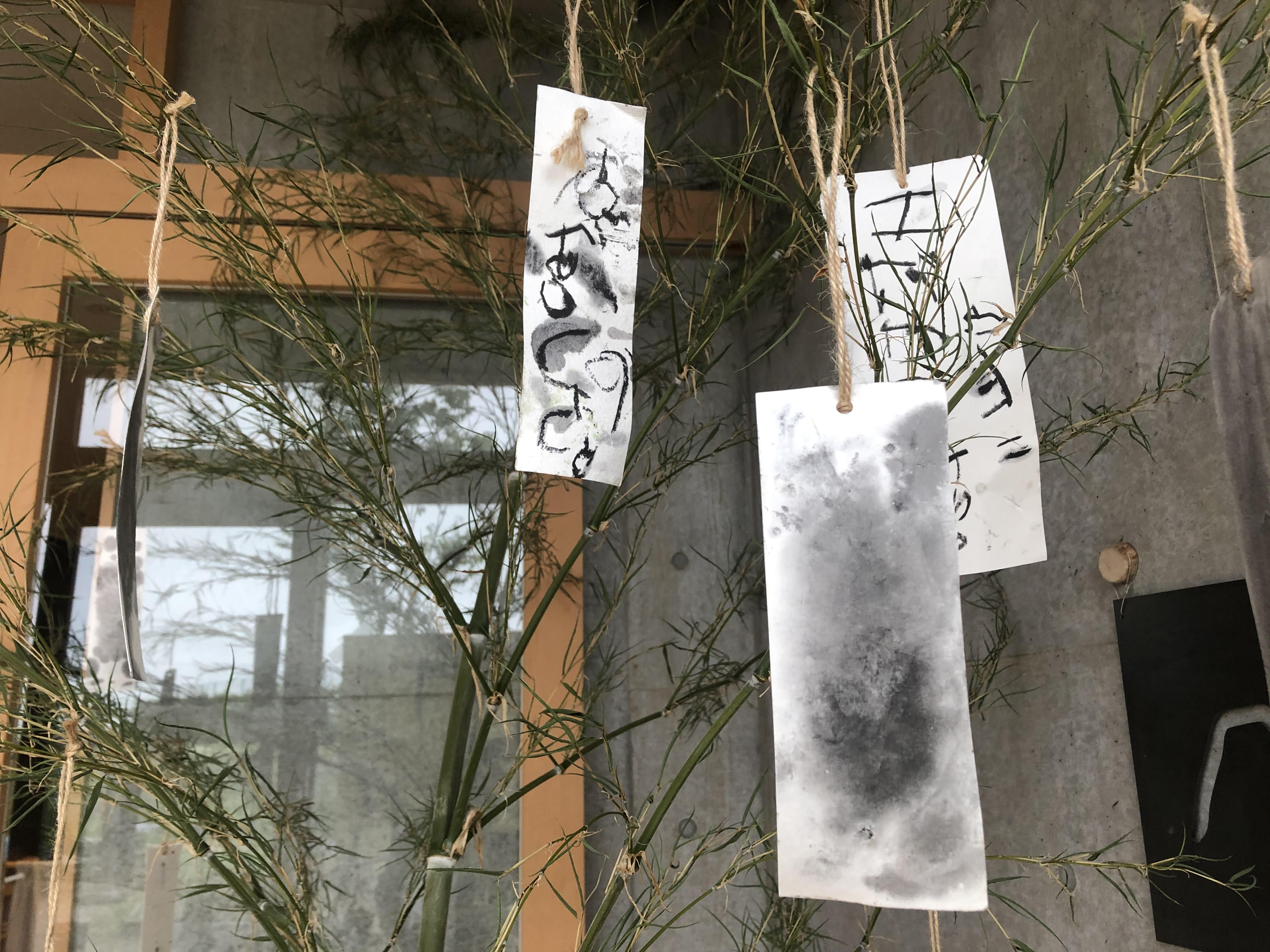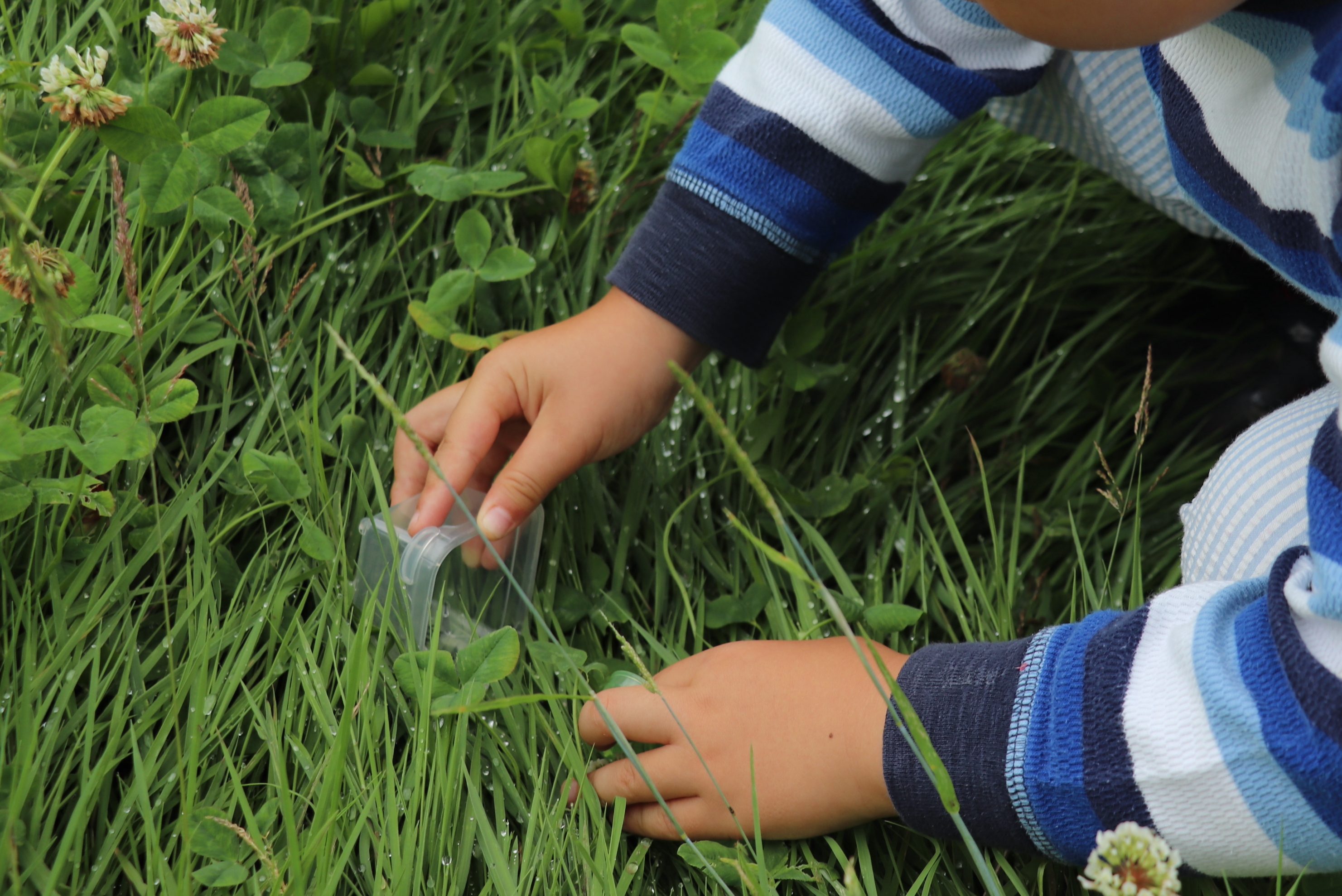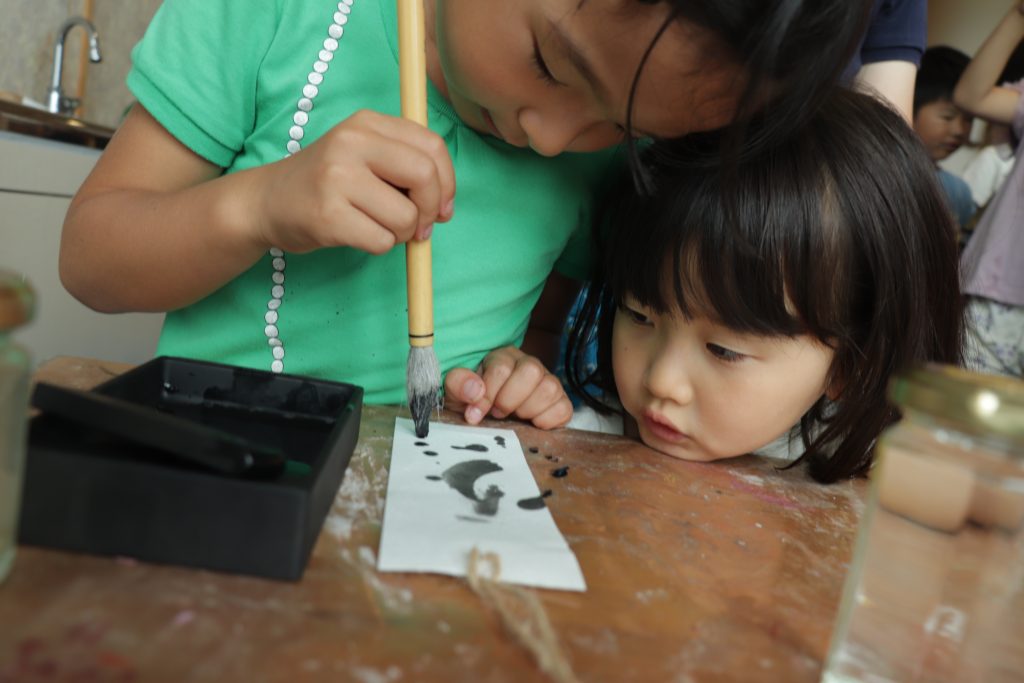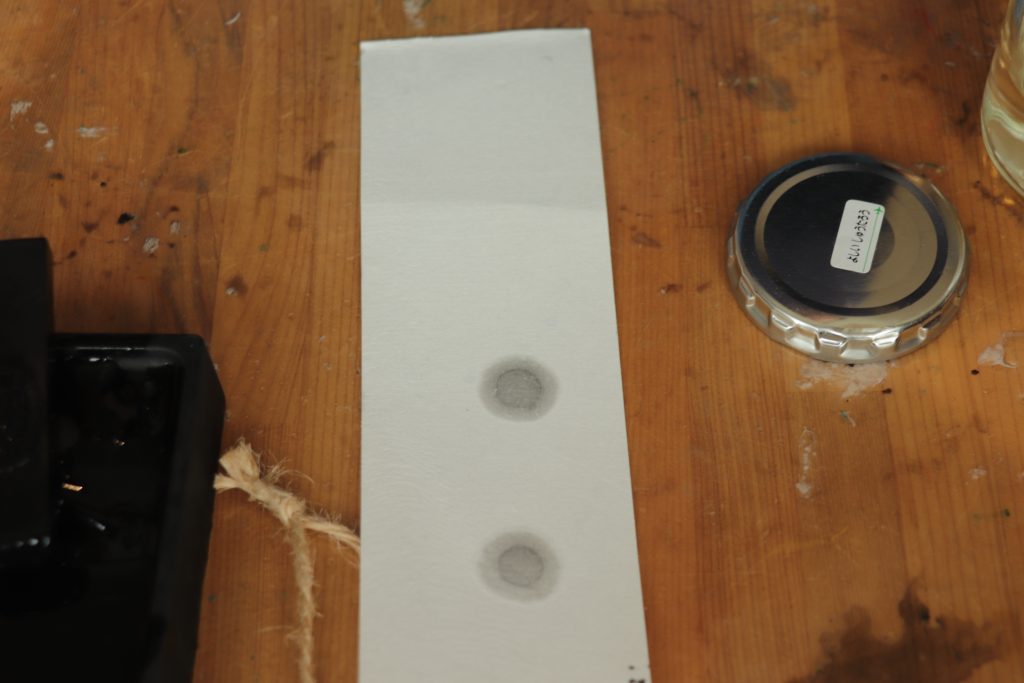
2021.07.30 Collecting water for Tanabata and the sensitivity of being alive on the earth
Yanokono ’s Tanabata is unique, in which children collect rainwater from drops on leaves, make ink with the water and draw with it. We consider the series of actions as prayers. Asako-san, Yuki-san, and Tomoko-san looked back on this year ’s Tanabata.
Text : Yuki Baba
”What is the meaning of Tanabata for children?” was the question I had in my mind. From June to July, it was getting hotter and the children were playing with water almost every day. Personally, I have been asking myself how I can tell them about the amount of water they should use. To children, it seems if you turn on the faucet, an inexhaustible supply of fresh water will come out, but in reality, it is not. Even if I tell them about the scarcity of freshwater on earth in words, it is difficult for them to physically feel it. If I were to ask myself if I really know the finite nature of water, I would say that I only understand it in my head.
At such a time, I learned about the origin of Tanabata, ”collecting morning dew to make a wish,” and I thought that the experience of collecting morning dew might be a good opportunity to feel the scarcity of water. I thought that the experience of collecting morning dew would increase their sensitivity to the scarcity of water, and that this increased sensitivity would lead to the Yamanoko ’s childcare goal of ”sensitivity to the fact that we live on the earth”.
When we actually started collecting water, everyone looked for water droplets on the leaves as if they were looking for and catching insects; ”there ’s another one here!”, ”here it is!!”
With a delicate hand, they shook the leaf with water droplets on it and tried to drop it into their own little bottles. their sensitivity to the water droplets on the leaves, which they hadn ’t paid attention to before, suddenly increased, and when they found a patch of grass with a lot of water droplets on it, they happily said, ”There are so many!” I was struck by the precise perspectives when looking for water droplets on leaves and the delicacy of their hands when collecting them, which was in sharp contrast to their boldness when playing with water.
On the day of Tanabata, when the children were rubbing sumi on the suzuri (inkstone) and using brushes to draw on the washi (Japanese paper), their explorations and expressions were very vivid. Shutaro rubbed ink on the suzuri for the first time, soaked the brush in the ink, dropped an ink on the washi, soaked the ink again, let the brush contain the slightly darker water and dropped it on the washi again, and looked at the difference in the shade of ink between the first and second times. Furthermore, a drop of water spread out in concentric circles on the paper, and he looked at the difference in the density between the center and the edge of the paper, saying, ”The center of the paper is darker”. Because of the black-and-white world of sumi and the washi, the shading looked impressive. They also tried pressing their brushes against the paper until it blistered and tore, or they drew on the paper without using a brush, holding sumi as it was.
The day after Tanabata was over, when we went for a walk, M-chan said, ”Oh, look at that! There ’s a drop of water on a leaf!” When we play in the water, we still use water boldly, but M-chan ’s comment made me think that her sensitivity to water had changed through Tanabata. Also, about a month after Tanabata, MM-chan saw many drops of water on the grass and said, ”Oh, I wish today was Tanabata!”

















 PREV
PREV